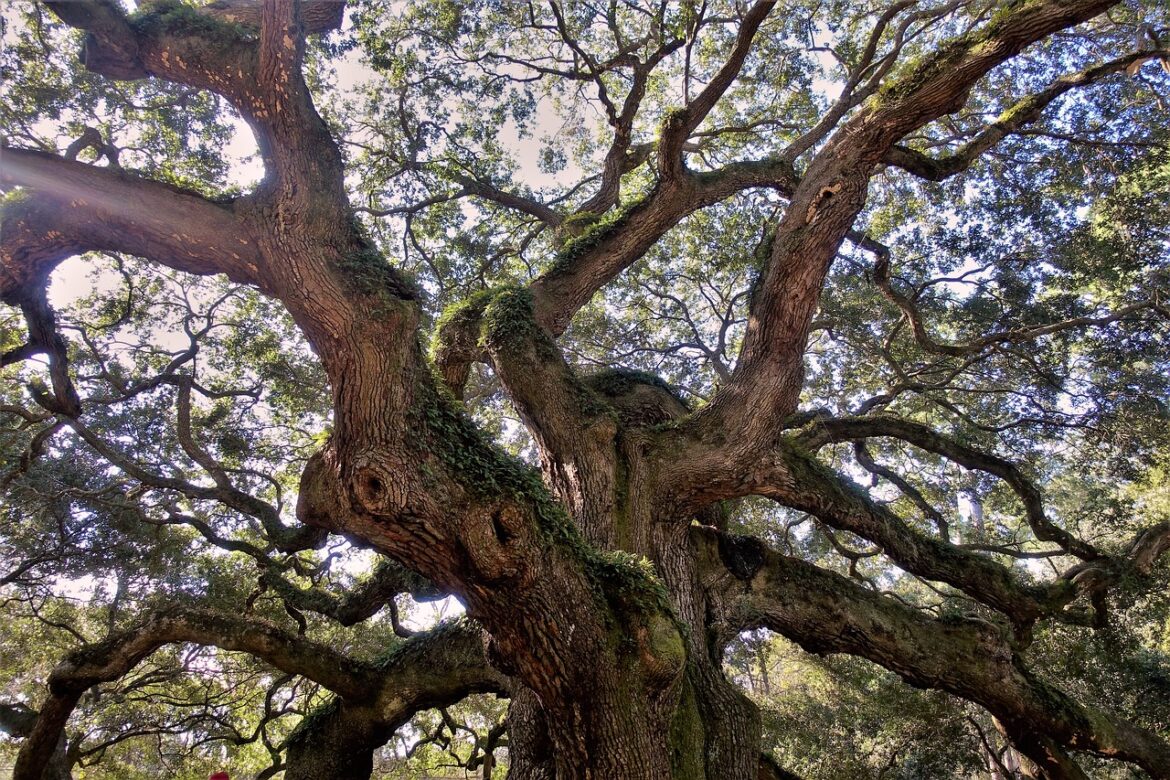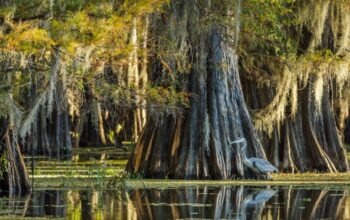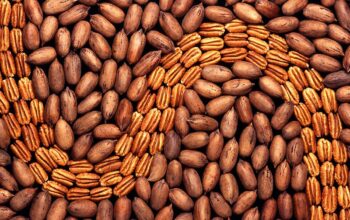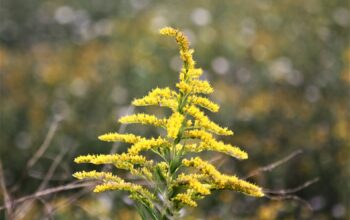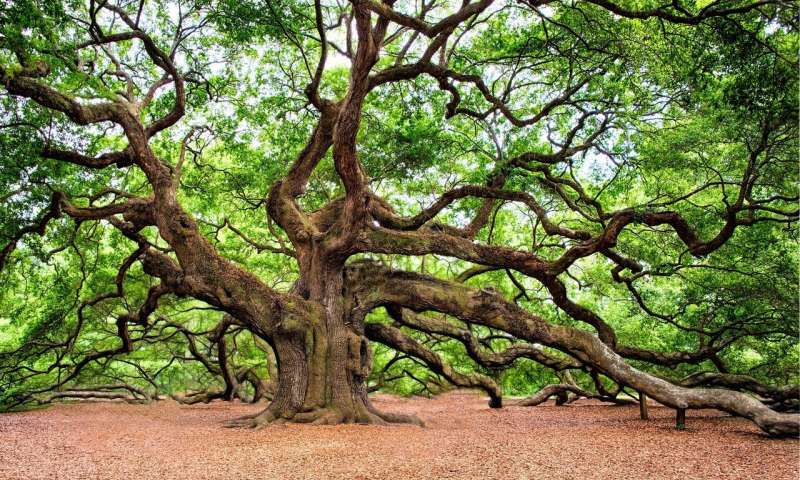
Oak is a name ascribed to trees and shrubs in the genus Quercus, a part of the beech family, Fagaceae. The genus, native to the Northern Hemisphere, includes approximately 600 species. North America has the most variation of species, with about 90 in the US alone. Covington, Louisiana, is home to many of them.

Oak species found in Louisiana include post oak, Shumard oak, Nuttall oak, water oak, swamp chestnut oak, blackjack oak, overcup oak, laurel oak, bluejack oak, southern red oak, white oak and live oak. Other varieties in the region are the willow oak, sawtooth oak, cherrybark oak and turkey oak.
Today we’ll talk about 5 species that can be found right here in Covington – the swamp laurel oak, southern red oak, Nuttall oak, water oak and southern live oak.
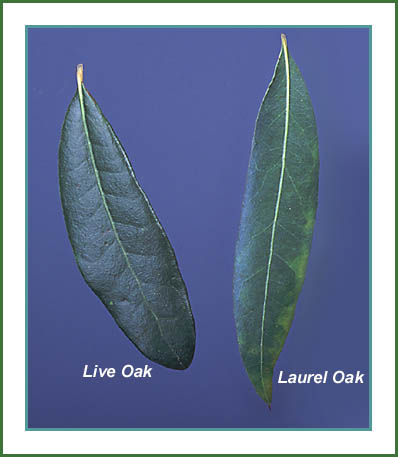
The swamp laurel oak (Quercus laurifolia) is a medium to large semi-evergreen tree growing 60 – 100 feet tall. Leaves are long, pointed, lending to its other name “diamond-leaf oak”. Smooth, usually lobe-less leaves make this tree easily confused for a live oak – however, the laurel’s leaves are longer and more pointed. The laurel oak is also a taller tree once mature and lacks the live oak’s long, drooping branches.

The southern red oak (Quercus falcata), often called Spanish oak, has long leaves with 1 distinct end lobe and often 1 – 3 lobes on each side. Its leaves are shiny green on top, with rust-colored or gray soft hairs beneath, turning reddish-brown in fall. The bark is dark gray with broad ridges and plates. Height ranges from 50 to 100 feet, although some wild specimens are noted to have grown even taller. The cherrybark oak is a variety of the southern red oak with smooth, cherrylike bark.
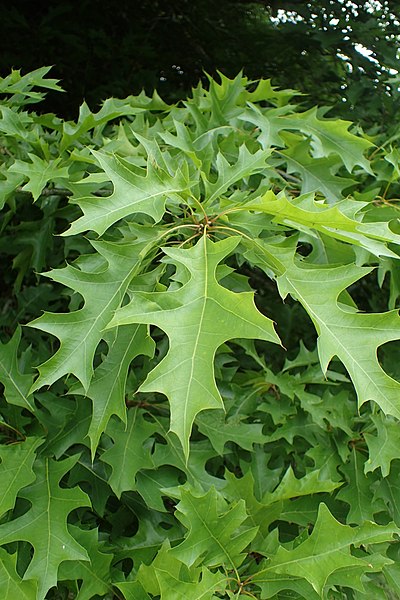
Nuttall oak (Quercus texana) is a large tree native to the Mississippi River valley with an average height of 60 to 100 feet. Also erroneously referred to as a pin oak because of its similar foliage, it was not distinguished as a separate species until 1927 by Thomas Nuttall. Leaves are deeply divided into 5-7 narrow long-pointed lobes, dark green above and lighter, fuzzy underside. Nuttall oak is known for its showy red leaves in fall. Acorns are oblong with dark stripes.
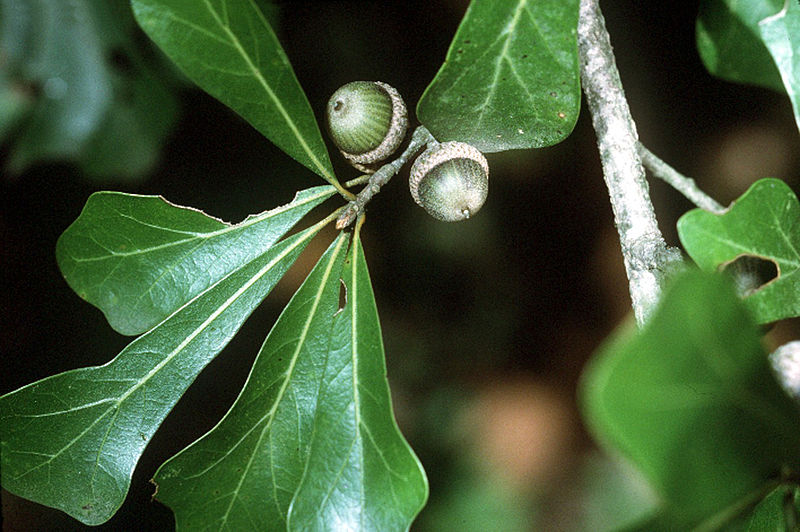
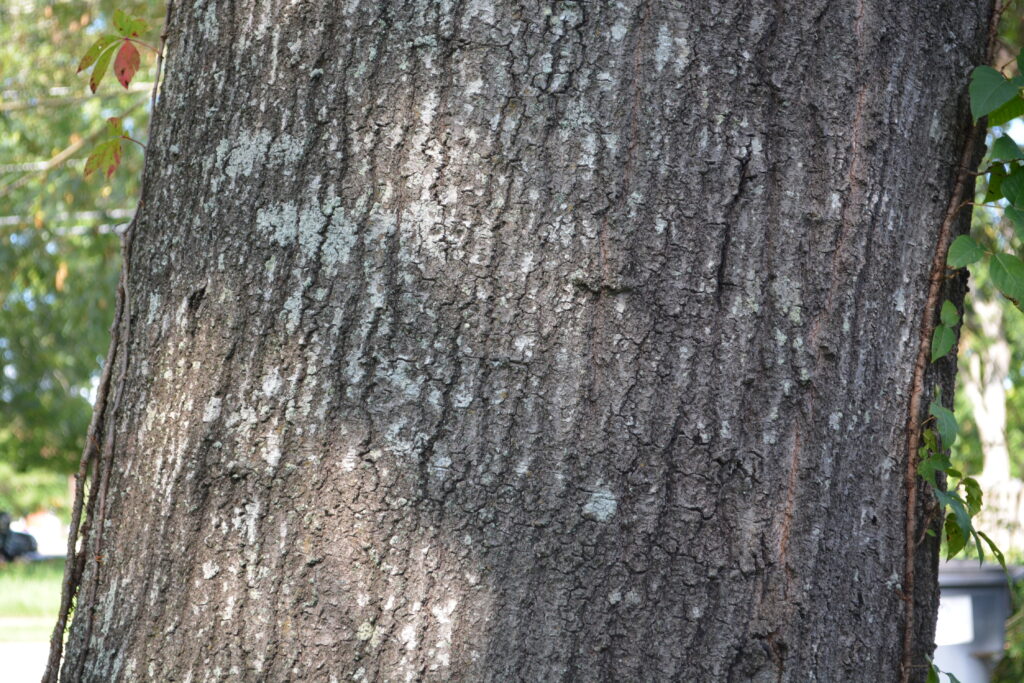
Which brings us to the two most common oaks here in Covington – the water oak and the southern live oak. The water oak (Quercus nigra) stands at 50 to 100 feet, and as its name suggests, loves to grow along rivers and wetlands. Leaves are long, wedge-shaped, with a rounded slightly 3-lobed tip, dull blueish-green above, turning yellow in late fall and shedding in winter. The water oak is also called the spotted oak, named for the white splotches on its dark gray bark.
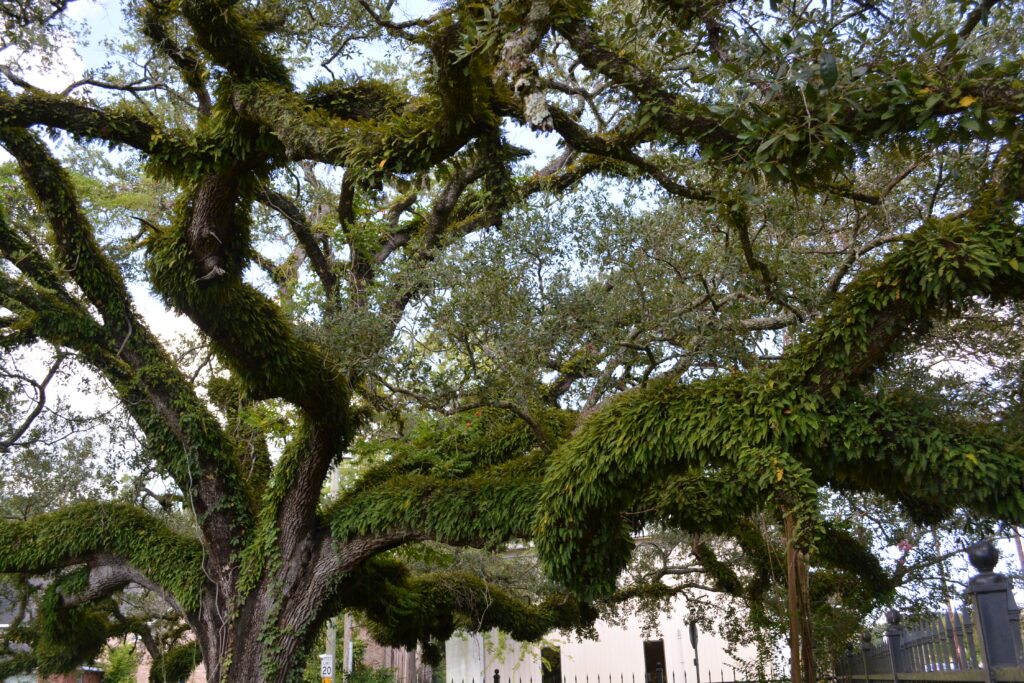
The southern live oak may be the most recognized or revered of the oaks – its large, drooping branches, usually moss and fern covered, have become a symbol of the quintessential southern tree. A shorter species only growing to about 60 feet, it tends to be wider than it is tall, with limbs stretching out to an 80 foot average canopy.
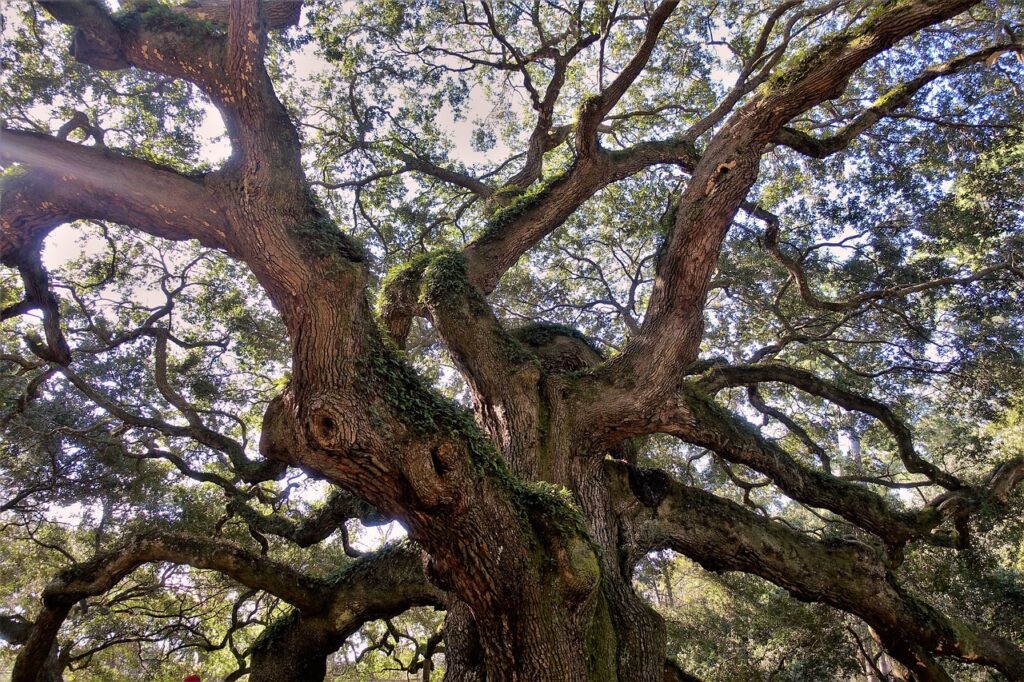
The name live oak comes from it being an ‘evergreen’ tree – for that reason other evergreen oaks are often called live oak as well. Most commonly it refers to the southern live oak, Quercus virginiana, also called Virginia Live Oak. Defining the species of live oaks can be tricky – with ongoing controversy surrounding classifying varieties and hybidizations as distinct subspecies. While the southern live oak will retain its leaves nearly year-round, it is not a true evergreen, dropping leaves immediately before new growth in spring.
The southern live oak is also celebrated for its longevity. Many live oaks in St. Tammany Parish are cited to be between 100 – 500 years old. Locally well known for keeping records of old Live 0aks is the Live Oak Society (LOS). The membership of this society is made up of Live Oak trees – a tree must have a circumference of 8 feet to become a member. Those with a circumference of 16 feet or more are known as “Centenarians” with an estimated age of 100 years or more. LOS boasts a membership of 9,153 trees in 14 states and is under the auspices of the Louisiana Garden Club Federation, Inc. Currently the largest tree in its membership and honored as the Society’s President, the Seven Sisters Oak in Mandeville is estimated by foresters to be 1200 years old, with a girth of over 38 feet. This oak is also the National Champion on the National Register of Big Trees.
References for this article:
https://en.wikipedia.org/wiki/Oak
https://sciencing.com/native-oak-trees-louisiana-6521660.html

